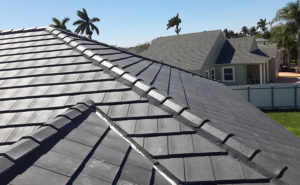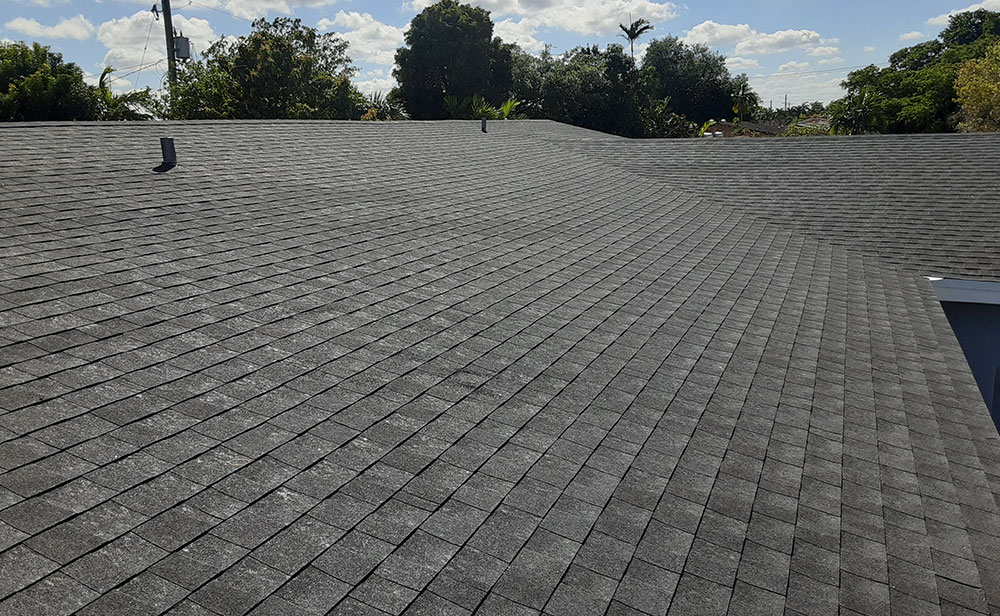Project Description
New Roof Construction
We offer numerous roof construction types, our team has the required skills and knowledge to construct both traditional and modern roofs using different materials. Our aim is to offer affordable roofing options to our customers. Below are the roof construction types that we provide to our clients.
Metal Roofing:
Metal roofing is durable, and offers maximum protection against rain water, fire, and the wind. It is energy efficient and lightweight, making it convenient for building residential homes or large commercial roofing projects. Steel roofing offers incredible architectural designs and is 95% recyclable.
If you are considering install a Metal Roof , check come of the benefits on Metal Roofing:
- Lightweight & portable: About ¼ the weight of a tile roof, and roughly ½ the weight of asphalt shingles.
- Durability: Metal roofing is highly resistant to hail and wind damage. It is also more resistant to fire, and can last up to three times the lifespan of an asphalt shingle roof.
- Low-maintenance: Most metal roofing products require very little or no maintenance.
- Energy efficiency: Metal roofs are considered among the most energy efficient types of roofs. They reflect a greater share of the sun’s rays and, depending on any coating applied to the metal, homes may see a savings of 20 to 30 percent on air conditioning costs.
- Style: More than any other roofing material, metal roofs are available in a wide array of colors, styles, and textures. Metal roofing can greatly enhance the appeal of a home.
Any Roofing Option Has Disadvantages To Consider, But The Advantages Of Metal Roofing Far Outweigh These Factors.
- Cost: The initial expense of a metal roof is generally higher than other roofing options. As the price of oil continues to rise, however, the cost difference between metal and asphalt roofing is beginning to narrow—since oil is a primary ingredient in asphalt shingles.
- Noise: Metal roofs can be noisier than other alternatives.
- Snow: Accumulated snow may slide off of metal roofs, causing damage and injury to people and property below. Properly installed snow guards are often used to stop snow from sliding.
Asphalt Shingles:
Many people choose asphalt shingles for their roofing project as this material is durable, reliable, and usually the most cost effective option. Asphalt shingles provide an incredible array of styles that make our clients’ buildings fabulous.
- Asphalt shingles are the affordable roofing material available on the market.
- They work well on a steep-sloped structures.
- Versatile, they adapt easily to different applications.
- Easy to cut, fasten and fit, shingles are considered the easiest roofing materials to install (and ease of installation keeps the cost down).
- Asphalt shingles don’t require specialized accessories for roof edges, wall terminations, and chimney or vent flashings.
- They require low maintenance and can be walked on without damaging the material.
- Although asphalt is not the lightest type of material, asphalt roof shingles are lightweight. They are compatible with most roof types.
- They come in a wide range of prices, sizes and colors.
- Roofing repairs are relatively easy with composite shingles.
- Most brands offer Class A fire protection.
- Shingles are susceptible to high wind damage – strong winds can uplift or tear shingles off easily.
- Asphalt roof shingles not only transfer solar heat into your home, they can become damaged by the heat.
- Mildew problems caused by excess moisture pooling in shady areas of your roof can damage shingles easily.
- Depending on the type of shingle, asphalt roofs are easily outlasted by tile, slate and metal, lasting on average 15 to 30 years.
Flat Roof:
A flat roof is a roof which is almost level in contrast to the many types of sloped roofs. The slope of a roof is properly known as its pitch and flat roofs have up to approximately 10°. Flat roofs are an ancient form mostly used in arid climates and allow the roof space to be used as a living space or a living roof.
- The biggest advantage of a flat roof is the expense. From building and installing to the materials commonly used for flat roofs, they are relatively economical.
- Installation of flat roofs is quicker and easier. There are fewer damage and repair costs over the lifespan of the roof. Installing things like solar panels, which save on electricity, and satellites—making repairs and cleaning gutters less expensive and easier to accomplish on flat roofs.
- Air conditioning units can be put on the roof instead of the ground. Flat roof solar racking installed on a flat roof is less evident from the ground than a sloped roof.
- You can design a living roof that becomes an outdoor lounge area to relax or barbecue, or plant a garden on the rooftop. The list of possibilities for utilizing a flat roof is nearly endless.
- A flat roof also makes interior space more versatile. Top floor apartments and finished attics are possibilities without the sloped walls produced by traditional pitched roofs. In homes that need maximum interior space, flat roofs are a significant advantage.
- Flat roofs are typically more accessible than roofs that are sloped. They are easier to climb upon to inspect. Care and caution should be taken any time a person climbs on a roof. Flat roofs are easier to check and much safer. Flat roofs are substantially more stable than slanted roofs when the building is small.
- They have an architectural appeal. In the right setting, they are economical as long as they are adequately maintained. Because flat roofs are quicker to install, the wait to move in is shorter. If repairs or replacement are needed down the road, re-roofing is relatively painless and quick.
- Material for flat roofs is a bit scarce. There are not many options from which to choose. Rolled roofing is used on the majority of flat roofs. The material is bitumen, TPO, Thermoplastic Polyolefin, EPOM or rubber. Each of these is relatively inexpensive and easy to install.
- They have a limited lifespan. The life expectancy is between ten and 15 years. There are rubber shingles that can be installed along with rolled rubber roofing. Some new materials such as PVC and polycarbonate roofing are becoming available. They are more expensive. Because they are recently developed products, there is no information about how long they will last.
- Draining, or rather lack of it is the biggest disadvantage. Flat roofs do not drain as efficiently as roofs with a pitch. Water tends to puddle and stay on the roof. The standing water can lead to the breakdown of roofing material or future leaks, especially along the seams. A flat roof contractor will likely install added mechanisms to address proper drainage. Water removal options are time-consuming and can be expensive.
- Proper sealing of both the top coat and underlayer is critical to the roof’s integrity. The coating is subject to regular flat roof leak testing to ensure there are no leaks. Flat roofs are typically installed in warm climates.
- Buildings with flat roofs are more affected by extreme changes in temperature because there is less space for installation. Most cannot withstand the weight of built-up snow in the winter.
- There are flat roof companies that feel that insulation and snow weight problems are misconceptions. They suggest flat roofs can be installed in cold climates when the roofs have a substantial thickness that leaves room for sufficient insulation. A thick roof can also support snow accumulation as long as it is not due to an avalanche. The snow adds to the insulation.
Tile Roof (Clay-Concrete):
Tile roofing is a great choice for roofs that experience hot weather or exposure to salt air. This is why you very often see tile roofs in the Southwest, coastal Florida, and California. They can also be ideal for climates in which infrequent rains dump large amounts of water in a short time, since many styles are excellent at shedding rainfall from cloudbursts.
 A tile roof can last over 100 years, especially when installed in the right climate. Clay and concrete tile roofs have been known to withstand hail, high winds, and even fire. Once you install tile, you will never have to install another type of roofing again. Just in case, most manufacturers will offer a 50-year warranty.
A tile roof can last over 100 years, especially when installed in the right climate. Clay and concrete tile roofs have been known to withstand hail, high winds, and even fire. Once you install tile, you will never have to install another type of roofing again. Just in case, most manufacturers will offer a 50-year warranty.
TPO Roofing Systems
TPO is an excellent roofing system for warm climates. TPO roofing systems are an example of the improvements to flat roofs that are being explored. The seams of TPO roofs are welded instead of glued. They are less likely to separate when heated.
Manufacturers certify flat roof contractors to install the membrane and honor the warranty. TPOs gave a white surface that reflects ultraviolet light and keeps the structure cooler than other options.
- Cost
TPO roofing remains a viable option for both residential and business owners, as it is relatively low in cost. On average, TPO roofing can cost anywhere from $5.00 to $7.50 per sq. ft. installed. - Durability
TPO roofing is incredibly effective in resisting bacteria, debris, algae, and dirt, as well as ultraviolet and chemical exposure. In addition to its high resistance to debris build-up, TPO’s flexible membrane allows it to withstand punctures, tears, and impact damage. - Simple Setup
Due to TPO’s lightweight and flexible properties, it is much simpler to install, as there as fewer seams. Less work and time spent on installing TPO translates into direct savings. - Energy Efficient
The energy efficiency of TPO roofing attracts many building properties, as TPO roofing produces monumental savings on cooling fees, and is good for the environment. Installing a TPO roof on your private home or building will keep the indoor temperature comfortable on blistering summer days while reducing HVAC costs!
- The system is fairly new to the roofing industry; only about 15 years, with a long track record of revisions and improvements due to surface and seam failures.
- Repairs are part of maintenance due to shrinkage from prolonged exposure to harmful UV rays causing stress on seams and flashing.
- Contractors must calibrate welding machine correctly, otherwise, seams may come loose during the first freeze/thaw cycle and lead to water infiltration.
- The manufacturer’s warranty is only 15-20 years.
- When both the walk-behind and hand-held welding is done, a special tool is need to check the welds. If the welding did not take, it will require patching.




